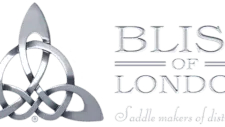Physical signs of poor saddle fit
The early warning signs…
- Muscle soreness under or behind the saddle. The horse may flinch when being groomed or behave abnormally when being tacked up.
- Dry patches under the front of the saddle surrounded by sweat following exercise.
- Dry patches on the spine surrounded by sweat following exercise could indicate too many layers or too thick a layer beneath the saddle, filling up the gullet and pressing on the spine.
- Areas of swelling under the saddle following exercise.
Long-term indicators…
- Depressions behind the scapulae (shoulder blades) or elsewhere under the saddle. These may reflect a chronically poorly-fitted saddle and pressure points.
- White hairs appear when pressure has injured the hair follicles. However, they usually do not appear until the hair coat changes.
- Dry patches under the front of the saddle surrounded by sweat following exercise.
- Scabby skin lesions under the front or back of the saddle.
How to assess saddle fit yourself
You should always get a qualified saddle fitter to fit and check saddles, but here are some things you can check yourself between visits…
The width and length of the tree of the saddle must be suitable for the shape of the horse’s back:
Check length: The tree of the saddle should not extend beyond the top of the last rib (T18).
Jumping saddles are longer in the seat than dressage saddles to allow for a more horizontal thigh position.
Some pony saddles are not adequately adapted to fit relatively large young people, without being too long for a pony’s back. The seat, knee rolls and flaps need to be designed to accommodate the rider’s growth.
Check width: The saddle should not tip back or forward on your horse’s back.
The saddle should remain central on your horse’s back in walk, trot and canter, with the seat parallel to the ground. A little movement from side to side is normal, but the saddle should not swing from side to side or lift off the back. The rider must be able to sit centrally in the seat, not tipping forward or back. When your legs hang, they should not drift forward or backward. You should be able to stand in the stirrups and maintain your balance.
The gullet is the central channel on the underside of the saddle, which fits over the top of the horse’s spine. It should not be in contact with the spine when a rider is on the saddle.
Check at least two fingers’ width aligned vertically (3cm) can be inserted under the pommel when the rider is standing in the stirrups, both before and after exercise.
Check you can see through the gullet of the saddle. The development of white hair on the top of your horse’s back can indicate lack of clearance.
The front of the tree (the point of the saddle) should stay approximately 5cm behind the top of the back of your horse’s scapulae.
Check the saddle stays behind the scapulae during exercise. Ruffling of the hair underneath the saddle could indicate undesirable movement.
The bearing area (panels) should be in contact all the way along the back.
Material used in panels differs, but this is not important provided the panels are soft and smooth against the back.
Feel under the saddle for any gaps. There should not be any areas where there is either reduced contact, or no contact between the panels and the horse’s back. This can also be checked by looking at the grease on the saddle, if using the saddle without a saddle blanket.
Alternatively, dust the bottom of the saddle with talcum powder and see how it is distributed on your horse’s back. You should not be able to run your hand under the front panel with a rider on the horse. Feel for excessive pressure, especially under the tree points. Look at the distribution of sweat on the saddle pad under the saddle, or look for the presence of dry spots on the back following exercise, which may indicate pressure points.
Fitting of the saddle relative to back shape
The panels of the saddle must smoothly follow the curve of your horse’s back to fit well.
Do recognise back shape can change within two months, the speed and direction of which are influenced by saddle fit, age of your horse, level and type of work and bodyweight. Frequent saddle fit checking is important, particularly when the grass starts to grow in the Spring. Saddles need to be adjusted to accommodate for these changes.
Horses having time off work are likely to change shape and saddle fit should be checked when regular work is resumed.
Saddle slip
Saddle slip is defined as the saddle consistently moving to one side while you are riding. Saddle slip may be due to an ill-fitting saddle, asymmetry in the horse’s back shape, a crooked rider or hindlimb lameness. We have demonstrated hindlimb lameness is, by far, the most common cause.
Detection of saddle slip provides owners, riders and trainers the opportunity to identify not only obvious lameness, but also low-grade and sub-clinical lameness. If your saddle starts to slip regularly, seek help from…
A qualified saddle fitter, a veterinarian experienced in lameness recognition and get someone to check you are sitting squarely. You must be observed in walk, trot and canter directly from behind. Help from a physiotherapist may be beneficial to teach you to sit more squarely.
Saddle use dos and don’ts
- Do remember using layers to correct a poorly fitting saddle can temporarily reduce signs of discomfort because the pad relocates the pressure points. Improvement is usually transient, because new pressure points soon develop as a result.
- Do be aware using the same saddle on more than one horse is not ideal and should be avoided, unless the horses have similar back shape.
- Do recognise pain elicited by feeling or grooming the back may be an indicator that back shape changes have occurred and saddle-fit should be reassessed.
- Don’t be afraid of seeking professional help if something doesn’t feel completely right regarding your saddle on your horse!
The best saddle to buy is one that fits both the horse and the rider. To ensure good welfare finding the correct fitting saddle is essential and it is strongly advisable to use the services of a qualified saddle fitter.
Use our online form to book your saddle fit today!




